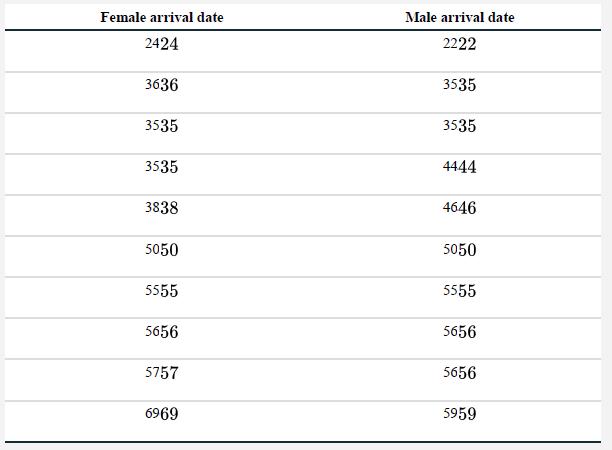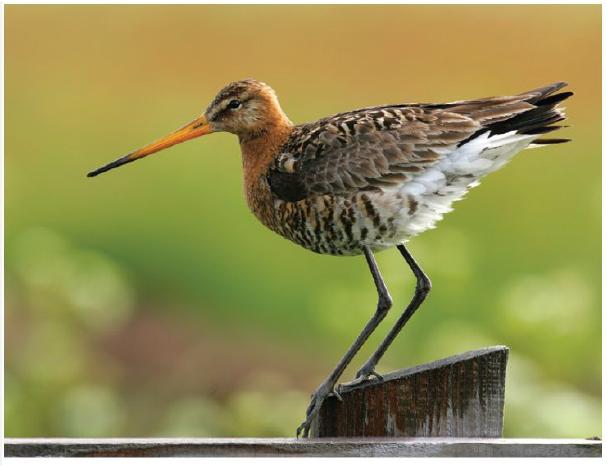Answer the following questions using the data for the godwits in Practice Problem 5. a. Adding 30
Question:
Answer the following questions using the data for the godwits in Practice Problem 5.
a. Adding 30 to each of the observations for males converts arrival dates to “days since March 1” rather than March 31. How is the correlation coefficient between arrival dates of males and females affected? What can you conclude about the effects on the correlation coefficient of adding a constant to one or both of the variables?
b. Dividing female arrival dates by seven converts their arrival dates to “weeks since March 31” rather than days. How does this affect the correlation between male and female arrival dates? What can you conclude about the effects on the correlation coefficient of multiplying one or both of the variables by a constant?
Data from problem 5
Birds of many species retain the same breeding partner year after year. In some of these species, male and female partners migrate separately and spend the winter in different places, often thousands of kilometers apart.
Yet they manage to find one another again each spring. In a field study of individually banded pairs of black-tailed godwits, Gunnarsson et al. (2004) recorded spring arrival dates of males and females on the breeding grounds in the year after they were observed breeding together. The data for 10 pairs are provided in the accompanying table. Arrival date is measured as the number of days since March 31.


Step by Step Answer:

The Analysis Of Biological Data
ISBN: 9781319226237
3rd Edition
Authors: Michael C. Whitlock, Dolph Schluter





